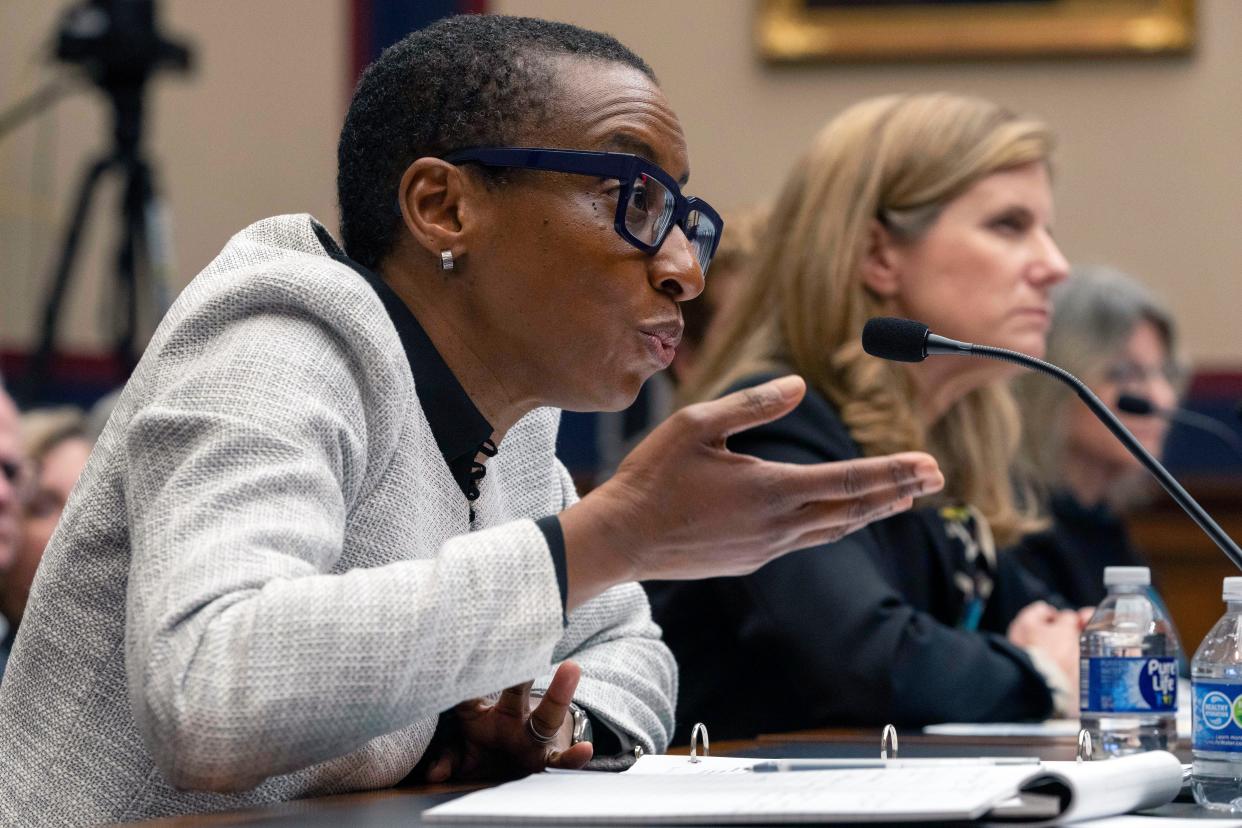Colleges have the resources but not the tools to deal with campus protests | Opinion

"Long Live Intifada! Globalize Intifada! Intifada Revolution!"
These and other chants from the Harvard, U Penn and MIT campuses were centered on the video that started the recent hearing before the House Subcommittee on Higher Education and Workforce Development. Palestinian and Israeli flags faced off as if locked and loaded. We learned that students of Jewish heritage and those of Palestinian heritage each feared for their safety. All this was unfolding on three campuses with a combined endowment of nearly $100 billion.
They certainly have any resources they may need to address the problem. But do they know what tools will work?
Maybe the three (now two) university presidents should come to Cincinnati. As a city, we have seen people passionately protesting, moving through the streets chanting "No Justice, No Peace." And in our own local public schools, we have heard speech and threats become harassment and bullying that instilled fear in some students − fear so severe that students have committed suicide.
In 2001, our streets looked like the current protests on the three campuses. Our issue was tension with the police. To face it, we commenced a collaborative dialogue in Cincinnati. It was, in fact, a community conversation that engaged eight stakeholder groups, and we deliberately and affirmingly let folks speak their minds while capturing all the ideas. We then jointly crafted five goals for police reform that were adopted not just by Black residents but by police officers and their families, youth, ministers, white residents, social service agencies, police administration, Hispanics, LGBTQ residents and business folks.
No actual negotiations to bridge differences and frame our Collaborative Agreement was attempted until we had those five shared goals. The point was to listen to each other deeply before moving forward. That listening and sharing was possible through the work of excellent facilitators dispersed among the groups.
That listening was modeled by top city officials and accurately reported by local media. Not as a horse race − "who’s winning the argument" − but with lengthy clips that helped the viewer walk in the shoes of those in pain and fear. After we had an agreement, we returned to those groups to make sure they agreed that the document was consistent with the shared goals.
Maybe Harvard, U Penn, and MIT should take a few days after the holiday break and engage in a community dialogue where their students, faculty and administrators could affirm the worth and dignity of each other and understand their different viewpoints. Maybe they can work deliberately to understand the differing viewpoints on disinvestment, West Bank settlements, the Gaza war and other challenging and divisive issues.
But what about the question that sent the hearing coverage viral? "Does calling for the genocide of Jews, violate (the University of Pennsylvania’s) rules or code of conduct. Yes or no?" The implication is that a "yes" answer would trigger punitive measures. None of the university presidents gave a "yes" answer and no one was satisfied.
Here is where I suggest the that the university presidents stop by the Cincinnati Public Schools offices. They will find a detailed student conduct code with special provisions to address harassment and bullying. Certainly, calling for genocide of Jews or Palestinians could instill fear in Jewish or Palestinian students and violate the prohibition on threats.
One tool for addressing this in Cincinnati is a commitment to restorative justice. In some cases, a swift and punitive response to violent conduct is needed, but in most cases, offensive conduct is first addressed by investigating the circumstances and engaging in a facilitated dialogue informed by the facts to help the participants understand the impact of their actions on each other and hopefully commit not to repeat such conduct. The system does track repeat perpetrators and victims so there is accountability. The suicide of bullying victim Gabe Taye triggered this serious commitment to restorative justice. It is working.
I read through the student conduct codes at the three schools. I saw no use of restorative justice. This seemed unfortunate particularly at Harvard where there are courses taught in using restorative justice as part of school discipline. A Jewish student at Harvard is part of the diaspora and could certainly feel personally threatened by a campus chant calling for genocide of Jews. Restorative practices are designed to help bridge the two sides and make sure everyone is heard and the fears and feelings of those involved are understood. A Palestinian student targeted by hate speech and threats would have similar refuge.
Not having robust restorative practices built into the student codes at these institutions is a seriously missed opportunity. If they do have some form of this available, it is not clear from their websites and it was not lifted up by the three presidents in their presentations.
Academic communities should be models for how folks with differing views can coexist, respect and learn from each other. The takeaway from the sad hearing should not be who gets fired and who gets retained but rather, whether ideas like collaborative dialogue and restorative justice can take root and help us treat each other with understanding and respect.
Al Gerhardstein is a semi-retired attorney in Cincinnati.

This article originally appeared on Cincinnati Enquirer: Universities should be models for how differing views can coexist

